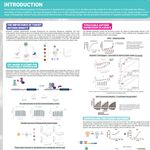Sex bias in preclinical research, why it exists and how to drive change
-
Natasha Karp, PhD
Principal Data Scientist, AstraZenecaBIOGRAPHY
Inherent in research, is the simplification of a complex world into a testing space to explore cause and effect. Across preclinical research, questions are being raised on the testing space and whether it is too narrow. Within genomic studies, such as GWAS, significant issues have been raised that the underlying datasets are not ethically diverse. Whilst within in vivo, in vitro and clinical research, a sex bias has been highlighted as culturally embedded in our working practices. In this workshop, we will focus on the sex bias embedded in our research pipelines. There have been multiple calls for action, and the funders of biomedical research are actively pushing the inclusion of sex as a biological variable, yet little has changed in practice. We will first explore the current standard practice, why there is a movement to include females and why the imbalance exists. Then in small groups we will explore the blockers that hinder the use of both sexes within our research.
Learning Objectives:
1. To understand the endemic sex bias our research pipelines and realise the implications of this to the generalisability of our research.
2. To understand that a number of misconceptions exist in the community that hinder the inclusion of both sexes in preclinical research. For example, studying both sexes does not require you to double your sample size as you will use a factorial design which estimates the effect from both sexes simultaneously. Another example: for the majority of variables, female mice are no more variable than male mice. Inclusion of both sexes should be the norm and justification for not including both sexes required.
Please update your information
Certificate of Attendance
DOWNLOAD CERTIFICATE




